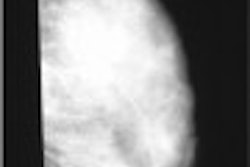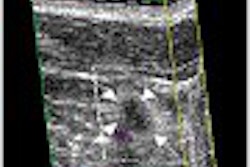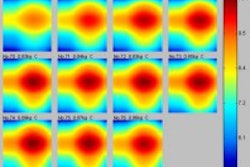SAN DIEGO - When it comes to staging, restaging, and evaluating recurrent breast cancer, FDG-PET demonstrates clear superiority over CT imaging in sensitivity, specificity, and accuracy, according to recent studies conducted in Philadelphia.
Dr. Imtiaz Ahmed presented the work he and fellow researchers conducted on breast cancer patients at the I. Hahneman University Hospital and Mercy Catholic Medical Center in Philadelphia to attendees of the American Roentgen Ray Society annual meeting on Tuesday.
"Currently, CT is the standard modality used to detect cancer metastases in the lung, liver, and other soft tissues. In our study, 18 FDG-PET was twice as sensitive as CT in detecting the spread of breast cancer," said Ahmed.
The team reviewed 32 patients, with an age range of 35-80 years (mean age 56.9), who underwent 35 studies. The patients’ histopathologies included 15 infiltrating ductal carcinomas, 7 invasive ductal carcinomas, 6 poorly differentiated adenocarcinomas, 2 unknowns, 1 fibrocystic disease, and 1 atypical hyperplasia. CT imaging was performed on all the patients.
Whole-body FDG-PET imaging was performed on all the patients after the CT studies. The PET scans were done 45-60 minutes following intravenous injection of an average dose of 5.18 mCi of 18 FDG. In addition to the CT and PET scans, 29 of the patients in the study group also underwent 29 concomitant bone scans.
The researchers then performed radiographic and pathologic correlations on each patient’s studies. When they compared the FDG-PET studies with the CT exams, they found a sensitivity of 93% for PET and 46% for CT.
"In fact, the efficacy of PET was statistically significant in all parameters," Ahmed said.
This was borne out by specificity of 100% for PET compared with 73% for CT, accuracy of 94% compared to 54% for CT, a positive predictive value of 100% for PET compared with 79% for CT, and a negative predictive value of 80% compared with 38%, respectively, he reported.
In addition to the significant difference in sensitivity, accuracy, and predictive value of 18 FDG-PET compared with CT in the various stages of breast cancer, there was better detection of soft tissue and bone metastases with PET compared with CT and the bone scans, according to Ahmed.
Although PET showed much stronger numbers overall than CT for breast cancer staging, Ahmed and his fellow researchers are not advocating that CT not be used to reexamine the breast.
"FDG-PET is a complementary modality in the fight against cancer and always needs to be used with conventional imaging, such as CT and MRI, when staging, restaging, and evaluating breast cancer in patients," he said.
By Jonathan S. Batchelor
AuntMinnie.com staff writer
May 7, 2003
Related Reading
Pinhole technique abets dedicated breast SPECT imaging, April 24, 2003
Positron emission mammography shows promise for breast imaging, October 28, 2002
New camera may improve scintimammography, August 6, 2002
Scintimammography catches chemoresistance in breast cancer patients, June 13, 2002
FDG-PET predicts outcome in post-therapy breast cancer patients, March 8, 2002
Copyright © 2003 AuntMinnie.com



















